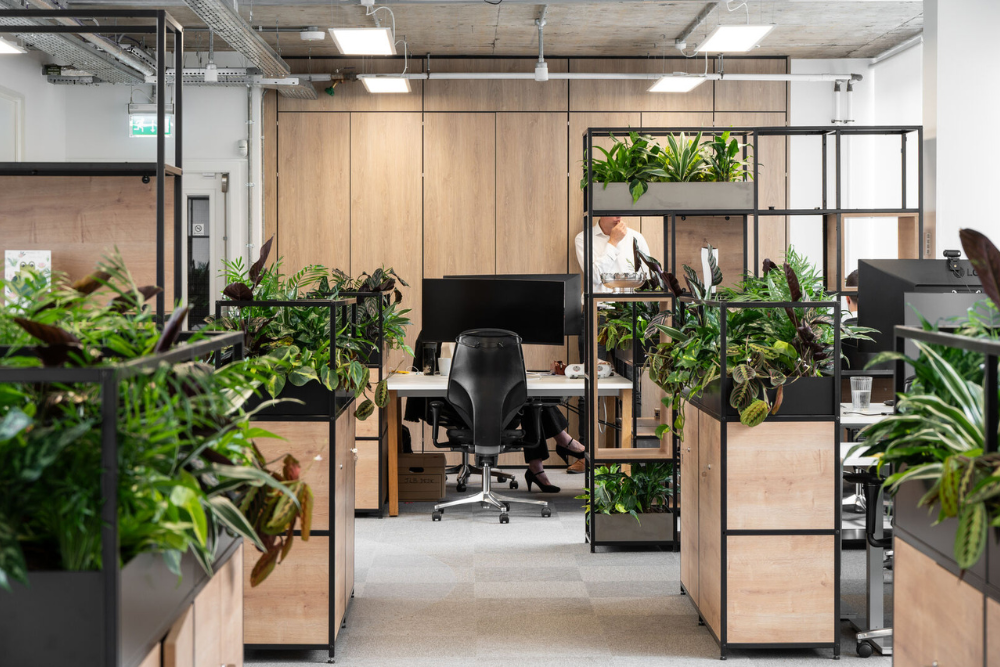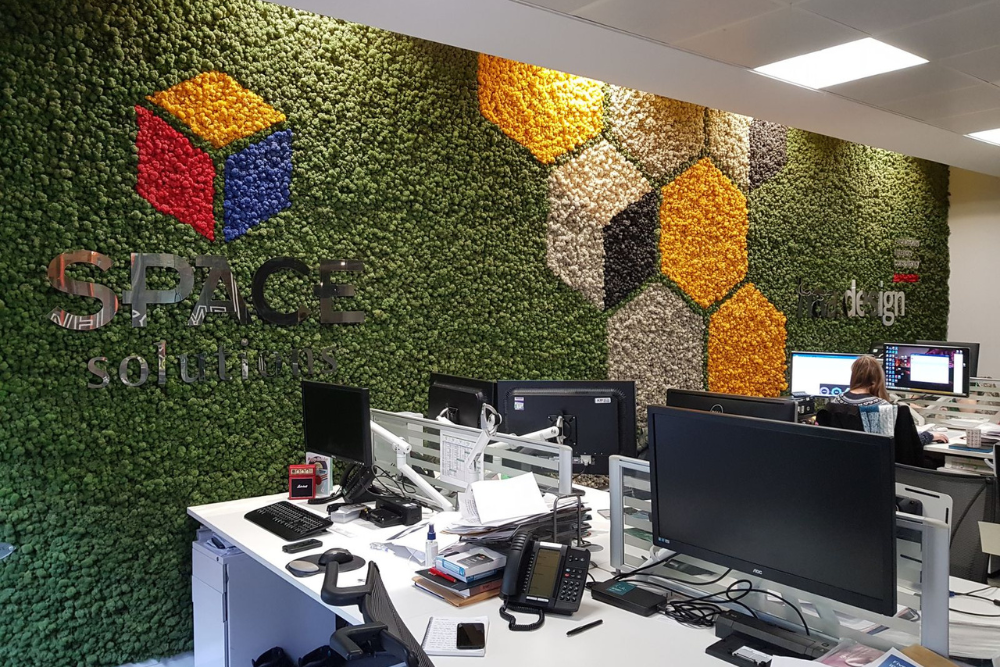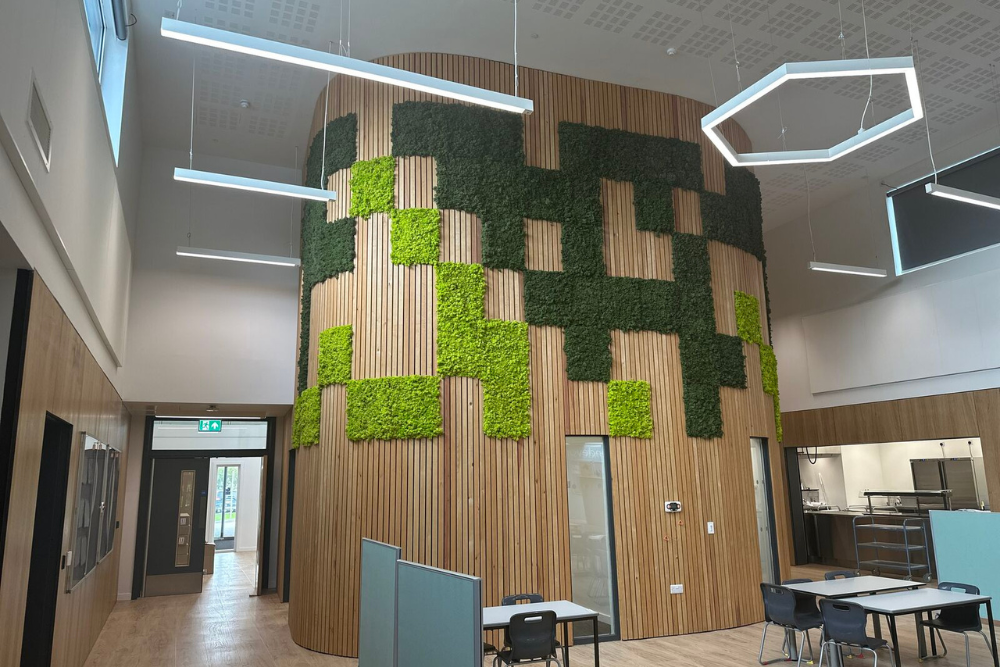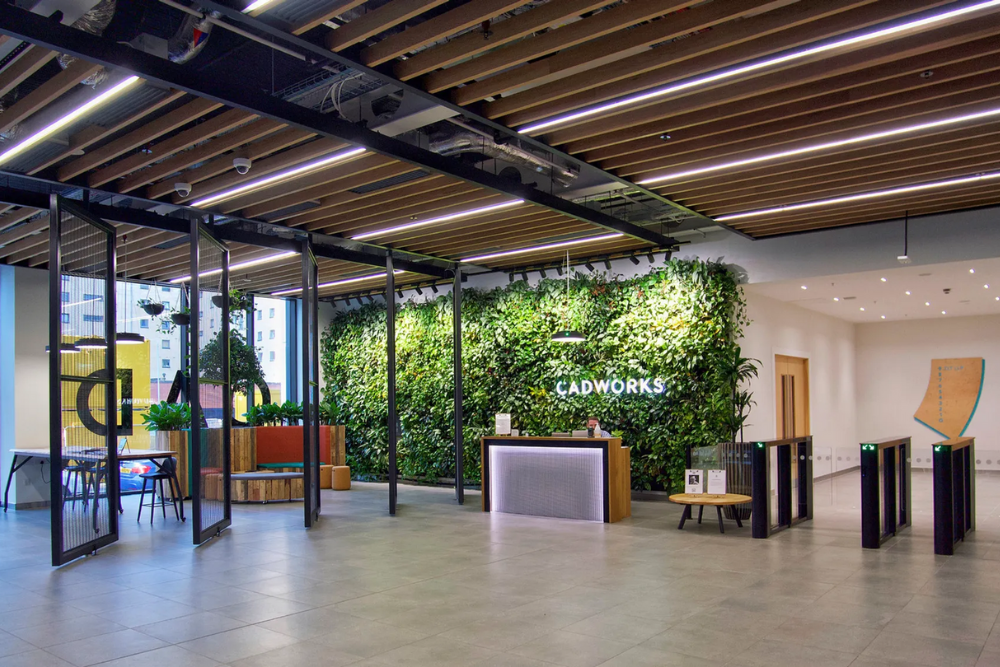The quest for creating harmonious workspaces extends beyond pure aesthetics. Acoustic considerations often stand out, with the aim of cultivating environments that encourage productivity, comfort, and well-being. Amidst this quest, an often-overlooked material emerges – plants.
Beyond their obvious beauty, plants offer a host of benefits including remarkable acoustic properties that can transform the auditory landscape of workplaces, alongside other notable health advantages of incorporating greenery into the office.
Why Prioritise Acoustics?
The modern workplace is often characterised by open-plan layouts and virtual collaborations which amplifies the need for effective noise management. The significance of regulating noise within interiors cannot be overstated. Unwanted noise not only disrupts focus and concentration but can also lead to health concerns, ranging from tinnitus to heightened stress levels – the impact can be palpable.

Absorbent Allies:
Plants wield a unique ability to mitigate noise through deflection, absorption, and refraction. Like natural sponges, they soak up sound waves, effectively dampening noise levels and fostering more serene environments. Certain plant varieties, such as Dracaena Janet Craig, Pachira Aquatica, and Spathiphyllum, are commonly touted as being the ‘best’ at cancelling indoor noise, however, there are some more general characteristics to look out for when sourcing plants to improve acoustics.
Seek out dense foliage which increases the capability to trap sound and soften the acoustics in a room. Plants that are equipped with thick leaves and a large surface area will normally dampen noise to a greater degree.

Strategic Placement:
The optimal positioning of plants within a space can maximise their noise-dampening potential. Clustering plants along room perimeters and strategic groupings can significantly mitigate noise levels, offering tangible acoustic benefits. The volume of plants in any space will also determine the degree to which noise can be dampened- more is always better but there will of course be limitations on space, budget and practicality to consider.
Innovative Solutions:
There are plenty of attractive, unique and low maintenance planted solutions available for designers to consider in their workspace design. One such option is Moss which represents a contemporary, space-saving alternative to traditional plants. Not only do verdant Moss Wall installations enhance aesthetics, but they also boast exceptional sound-absorbing properties, making them invaluable assets in noise-sensitive environments.

Moss is a sustainable material, harvested by hand from the forest floor, and is 100% biodegradable. It is then preserved using natural minerals, to stop it growing and to maintain its fresh look. The design possibilities with moss are exceptional- it can be framed it like a picture, transformed to cover a whole wall, or even incorporated into furniture. Moss can also be coloured to create patterns, words, or logos, on flat, contoured or 3D surfaces. And as a preserved natural product, it doesn’t grow, so there is no worry about watering or trimming, plus, it’s fire safe, resistant to discolouration and hypoallergenic making it the ideal material for offices.

Other Benefits of Plants in the Workplace:
Introducing plants into a workplace environment is one of the fastest, most beneficial and cost-effective things you can do. Research suggests that those sitting at computer monitors will be 12% more productive when there are plants nearby. Not only do plants take in carbon dioxide, they also absorb toxins in the air. Complaints of minor ailments often associated with Sick Building Syndrome, such as coughing, blocked sinuses, headaches, skin irritations and dry throats, decrease by an average of 25% when there are plants indoors.
When plants are watered, they return over 90% of that water into the atmosphere, so they combat the dryness caused by temperature control equipment such as air conditioning, computer operations and other electrical devices. During the summer months, air conditioning can be reduced because plants will absorb some of the heat.
Plants are also well known to create instant well-being, so if you are looking to make people feel nurtured, then introduce plants before you consider something that takes much longer, such as an office refurbishment.
Harnessing The Power of Plants:
In the realm of workplace design, the integration of plants emerges as useful tool for acoustic enhancement. By harnessing the natural properties of plants to absorb and deflect sound, workplaces can cultivate environments that foster productivity, well-being, and auditory harmony. The strategic incorporation of greenery as part of biophilic design offers a multifaceted solution to the challenges of noise management, whilst enhancing the overall quality of the workplace for employees and visitors alike.

Article by Benholm Group

















